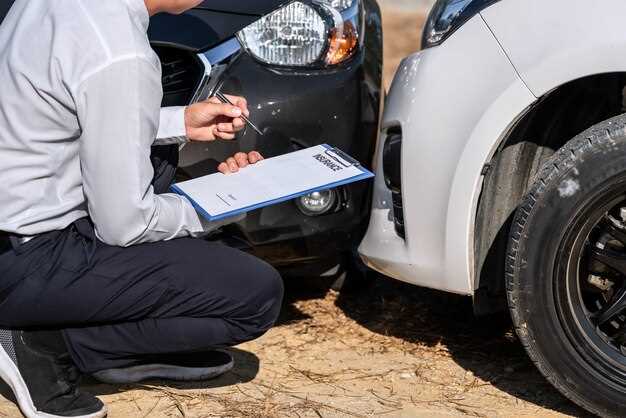Understanding Jeep warranties and what’s covered


When investing in a Jeep, understanding the warranty coverage is crucial for all vehicle owners. Jeep offers a range of warranty options designed to provide peace of mind and protect your investment. This article delves into the specifics of Jeep warranty coverage, detailing the various components included and what each plan offers.
Jeep’s Standard Warranty typically includes a limited three-year or 36,000-mile coverage, which encompasses both the basic vehicle warranty and the powertrain warranty. The powertrain coverage extends for five years or 60,000 miles, ensuring that critical components such as the engine, transmission, and drivetrain are protected against defects.
In addition to the standard options, Jeep provides extended warranty plans, often referred to as the Jeep Maximum Care plan. This plan offers more extensive coverage for up to 8 years or 125,000 miles, covering almost all parts of the vehicle, except for wear-and-tear items. It’s essential for owners to familiarize themselves with the terms and conditions that affect their coverage, including exclusions and limitations.
Ultimately, understanding the details of Jeep warranty coverage can save owners time and money, ensuring that their driving experience remains enjoyable and worry-free. Whether you’re a new owner or considering a purchase, knowing the ins and outs of your warranty can help make informed decisions about your vehicle’s maintenance and longevity.
Understanding the Different Types of Jeep Warranty Coverage

When purchasing a Jeep, it is essential to understand the various types of warranty coverage available to ensure your investment is protected. Jeep offers a range of warranty options, each designed to address specific needs and concerns of the vehicle owner.
1. Basic Warranty: This coverage, also known as the limited warranty, typically lasts for three years or 36,000 miles, whichever comes first. It covers most vehicle components, excluding wear-and-tear items, and provides peace of mind for new Jeep owners. During this period, any defects in materials or workmanship are addressed without charge.
2. Powertrain Warranty: The powertrain warranty extends up to five years or 60,000 miles. It focuses on crucial components such as the engine, transmission, and drivetrain. This warranty is vital for those concerned about the overall durability and longevity of their vehicle’s performance.
3. Rust-Through Warranty: This unique warranty protects against rust perforation on the vehicle’s body. Jeep offers this coverage for five years with no mileage limitation, ensuring that owners do not need to worry about corrosion affecting their vehicle’s structural integrity.
4. Roadside Assistance: Often included with Jeep’s warranties, roadside assistance provides support in case of emergencies. This service typically lasts for five years, offering features such as towing, tire changes, and lockout assistance. It enhances the overall experience of Jeep ownership by providing security on the road.
5. Extended Warranty: For those seeking additional peace of mind, Jeep offers extended warranty options. These plans can cover various aspects of the vehicle beyond the standard warranties, providing flexibility and customization based on the owner’s preferences and driving habits. Extended warranties can vary in duration and coverage, allowing drivers to select the best fit for their needs.
Understanding these types of Jeep warranty coverage allows owners to make informed decisions, ensuring they choose a warranty that aligns with their expectations and vehicle usage. Comprehensive knowledge about available warranties can significantly enhance the ownership experience and protect against unforeseen repair costs.
Common Exclusions in Jeep Warranty Policies

Jeep warranty policies provide essential coverage for various components of the vehicle, yet they also include specific exclusions that owners should be aware of. Understanding these exclusions will help you avoid unexpected expenses during the warranty period.
One common exclusion is wear and tear items. Parts such as brake pads, tires, and windshield wipers are not typically covered by the warranty, as they are subject to regular usage and deterioration over time. It is the owner’s responsibility to replace these components as needed.
Another significant exclusion involves damage caused by accidents or misuse. If a Jeep is involved in a collision or is operated in an unconventional manner, any resulting damage may not be covered. This includes water damage from submersion or overheating due to improper handling.
Modifications to the vehicle also void certain warranty aspects. If owners customize their Jeeps with aftermarket parts or accessories, they risk losing warranty coverage on related systems. This could include engine modifications or suspension alterations that lead to mechanical failure.
Maintenance neglect is another exclusion point. Jeep warranties require that owners adhere to regular maintenance schedules. Failure to perform necessary services, such as oil changes or fluid checks, can result in the denial of warranty claims related to related components.
Lastly, commercial use of the vehicle may impact warranty coverage. Jeeps used primarily for business purposes, such as towing or labor, might have altered coverage terms compared to those used for personal transportation. Always consult the warranty policy details to understand how usage affects coverage.
How to File a Warranty Claim for Your Jeep
Filing a warranty claim for your Jeep can seem daunting, but following a systematic approach can simplify the process significantly. To start, ensure you have all your necessary paperwork ready, including the original purchase receipt, warranty booklet, and any service records related to the issue.
Step 1: Identify the Problem
Before you initiate a claim, clearly assess and document the issue with your vehicle. Take detailed notes on the symptoms, when they occur, and any relevant circumstances that may assist in diagnosing the problem. Photos or videos can also be helpful.
Step 2: Contact Your Dealer
Reach out to an authorized Jeep dealership or service center to discuss your warranty claim. It’s crucial to choose a certified dealer, as they are trained to handle warranty issues specific to Jeep vehicles. Provide them with your documentation and a detailed description of the problem.
Step 3: Schedule an Inspection
The dealer will likely schedule an appointment for a comprehensive inspection of your Jeep. During this visit, make sure to communicate all the issues you have documented. The technician will examine your vehicle to determine if the problem is covered under warranty.
Step 4: Review the Warranty Terms
Understand your warranty coverage details, as specific terms and conditions apply. Familiarize yourself with what is covered and any limitations or exclusions. This knowledge will help you understand your rights and responsibilities throughout the claim process.
Step 5: Await the Dealer’s Decision
After the inspection, the dealer will submit their findings to Jeep’s warranty department for approval. You may need to wait for a period as they review the claim. If approved, the dealer will inform you of the next steps in the repair process.
Step 6: Follow Up
Stay in contact with your dealer for updates regarding your claim status. If there are any delays or issues, don’t hesitate to ask for clarification. Ensuring open communication can help expedite the repair process.
By following these steps, you can effectively navigate the warranty claim process for your Jeep, ensuring that any necessary repairs are handled promptly and in accordance with your warranty coverage.
